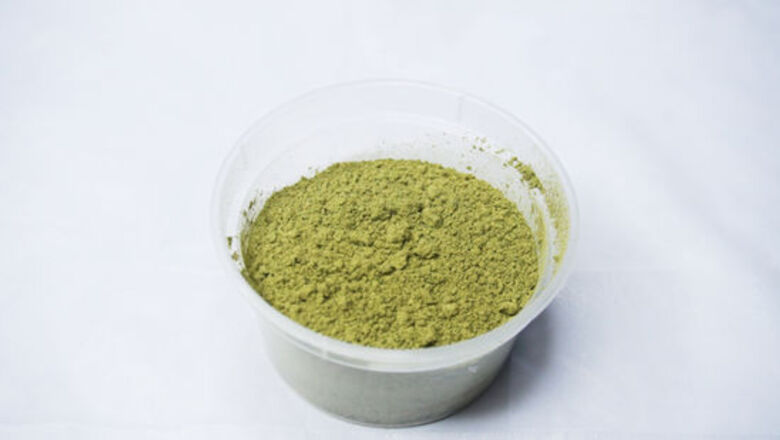
views
Mixing the Henna
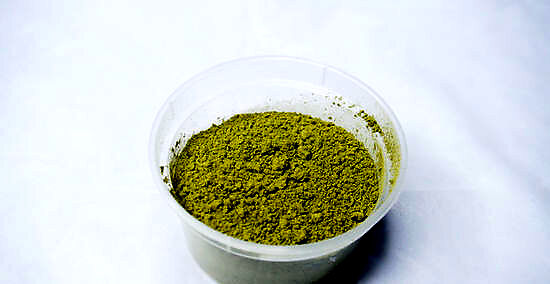
Purchase fresh, skin-safe henna powder. Do not skimp on quality to save money. Make sure that you buy high-quality henna powder made for skin use. Check the production and expiration dates on the package to ensure that it is fresh. Make sure that the henna is completely natural—there are a lot of artificial ones out there. The fresher the henna powder is, the better. Never use "black" henna powder or henna made for hair coloring. It is especially unsafe and banned in some countries. Henna may stain plastic bowls; a glass bowl will work the best.
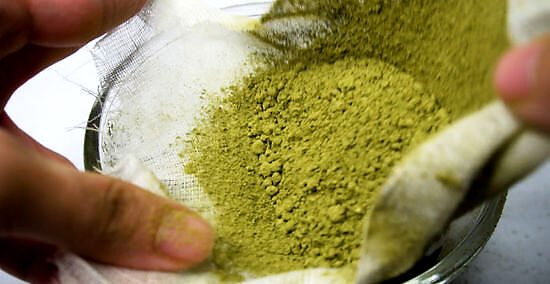
Sift 1 cup (100 g) of henna powder into a bowl through a chiffon cloth. Place a chiffon cloth over a bowl, then pour your henna powder into it. Lift the cloth up and gently scrape the henna against the cloth. Discard the henna left in the cloth, then repeat the process 2 more times with the henna left in the bowl. Start with more henna than you think you need. You want to end up with 100 grams after sifting. If you start with 100 grams, you might end up with less after sifting. For best results, use a kitchen scale to measure out 100 grams of henna powder. This will be more accurate than using a measuring cup. For a smaller batch, use 1/4 cup (25 g) of henna powder.
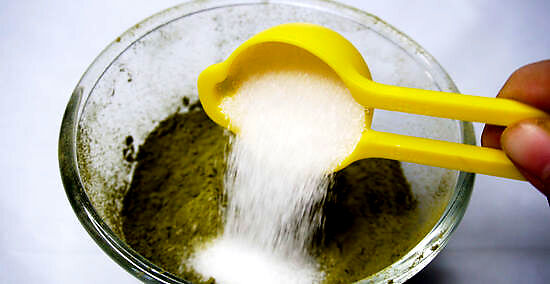
Stir to 2 tablespoons (25 g) of white, granulated sugar into the bowl. You don't have to add sugar at all, but it will help it stay wet longer as well as adhere better to the skin. Plan on using up to 2 tablespoons (25 g) of sugar. If you live in a very humid climate, however, you may want to add more sugar. You want to mix the dry ingredients together first. This will make it easier to blend everything together later on. For a smaller batch, use about 1½ teaspoons (13 g) of sugar.

Add 1¼ cups (300 mL) of lemon juice. You can use bottled or fresh lemon juice. Start with just 1¼ cups (300 mL) for now; you can add another ¼ cup (60 mL) later to achieve your desired consistency. If you use fresh lemon juice, be sure to strain out all of the pulp and seeds first. You can use another liquid instead of lemon juice, such as water or tea. Be aware that this will cause the dye to release faster and become less stable. For a smaller batch, use about 1/4 cup (60 mL) of water or lemon juice.
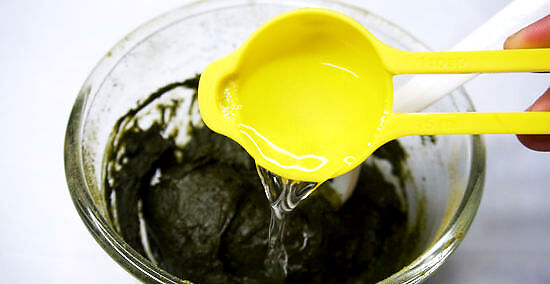
Add up to 1 ounce (30 mL) of lavender or tea tree essential oil. These 2 types of oil contain monoterpene alcohol, which helps release the henna stain. They are especially important if you want a nice, dark color. You can use a little less than 1 ounce (30 mL) of essential oil if you want a lighter stain, however. You can also try Nepali cajuput or frankincense as well. Do not use more than 1 ounce (30 mL) of essential oil per 100 grams of henna powder. This will be too much for your skin and irritate it. For a smaller batch of henna paste, use about 1½ teaspoons (7.5 mL) of essential oil.

Stir everything together until the texture turns consistent. Use a plastic, disposable spoon if you can, as the henna may stain rubber spatulas. If you don't mind the possibility of staining, however, you can use a small, rubber spatula. Scrape the bottom and sides of the bowl to ensure that everything mixes evenly. Don't be alarmed if the mixture starts to look greenish. This is normal with henna. Don't worry if there are some lumps left in the paste; they will dissolve on their own.
Finishing the Henna

Cover the henna paste with plastic wrap. Tear off a large sheet of plastic wrap, and drape it over the bowl. Press the plastic wrap against the henna mixture, making sure to smooth it down--just like making custard. Fold the rest of the plastic wrap over the edges of the bowl.
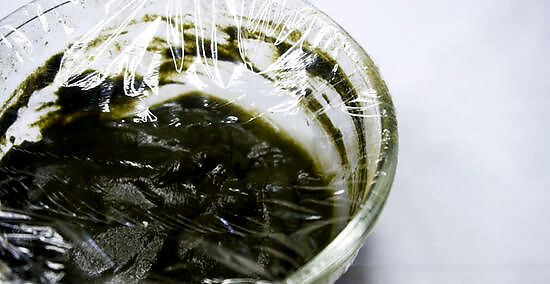
Set the henna aside to process, but test it every 4 to 6 hours. How long this takes depends on the brand you are using as well as the temperature in your home. Every 4 to 6 hours, place a drop of henna on your skin, wait 5 minutes, then wipe it off. If the stain is orange, you are all set to go. Common developing times for popular brands include:br> ORa Rajasthani: 6 to 16 hours Jamila Henna: 24 to 36 hours General Henna: 4 to 24 hours
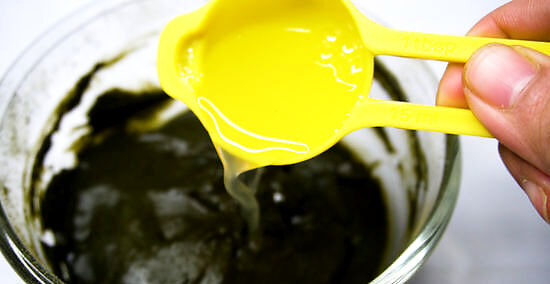
Add more lemon juice until the henna is a little thicker than honey. You want something that feels like stirred-up yogurt or very thick cake batter. If you were to dribble the batter from a spoon, it should fall in a thin ribbon. Any developing peaks should slump over slowly. Stir the lemon juice in 1 tablespoon (15 mL) at a time. You may up use to 4 tablespoons (60 mL). If you used water or tea previously, then you should use water now.
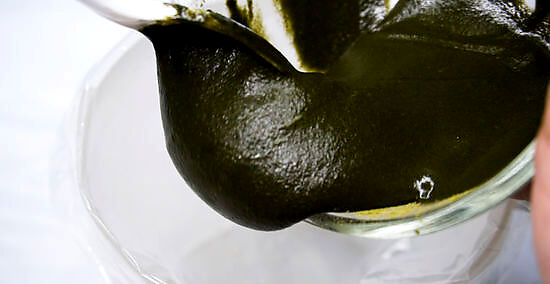
Scoop the henna into a plastic sandwich bag or piping bag. Set the sandwich bag or piping bag into a cup first, then fold the top edge over the rim of the cup. Use a spoon to transfer the henna paste into the bag, then tie the bag shut. You will eventually pipe it into henna cones; putting it into larger piping bag will make things easier. If you won't be using the henna right away, put it into a plastic, zippered, freezer bag and place it into the freezer. It will keep for 3 to 4 months. If the henna feels clumpy, you can strain it through a fine cloth first.
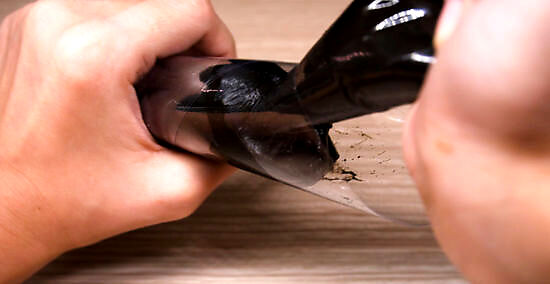
Snip the tip and pipe the henna into a henna cone. Use scissors to snip the bottom corner of your sandwich bag or piping bag. Fill a henna cone ⅔ of the way with the paste, then fold the top edge down and secure it with a piece of tape. Make sure that there are no lumps or air bubbles that restrict the flow of the henna. Set the rest of the henna aside or use it to fill more henna cones. A henna cone is essentially a rolled up sheet of thin, stiff plastic. You can make it yourself or buy it pre-made online.
Using the Henna

Look up designs to get an idea of what to draw. The possibilities with henna are endless, and the complexity of the design will depend on your skill set. The type of design will vary slightly, depending on where you will apply the henna. Popular places to apply it include your fingers, your palm, and the top of your hand. Look up terms like "henna designs" or "henna drawings." The internet is a great resource, but you can also find samples in Zen coloring books. Because the best henna art is often very complex, it may be a good idea to draw out some patterns on paper before applying it to your skin. It can also help to practice applying the henna on paper so that your lines have a steady flow and the designs are continuous and intricate.
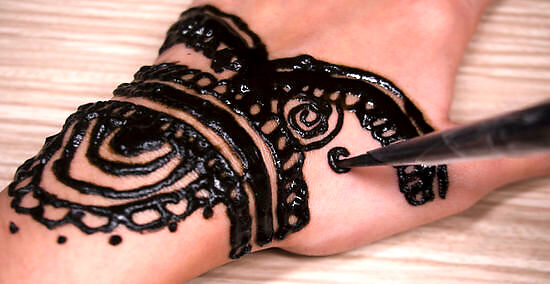
Squeeze the cone gently to produce a thin, delicate line. Start at 1 end of your hand and finish at the other. As you continue to apply henna to the rest of your hand, be careful not to touch the henna that's already on your skin. If you prefer a thicker line, apply more pressure. This is sort of like painting with a brush or using a calligraphy pen. Don't let the tip touch your skin, especially if it is made from metal. This won't harm your skin, but it will create light spots in the final design. Wipe away any smears with water quickly. A damp towel or Q-tip will work the best.
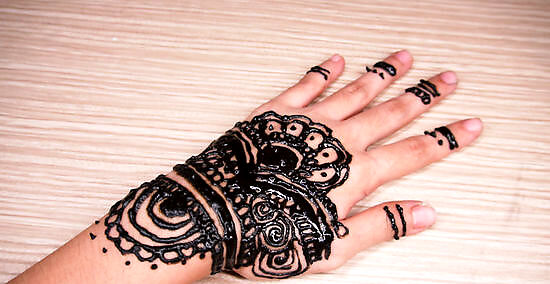
Wait at least 30 minutes for the henna to dry. The henna may start to feel dry after 15 minutes, but you need to wait at least 30 minutes for it to dry completely. If you want a darker, longer-lasting stain, then you should leave it on longer. As the paste dries, it will lose its puffiness and flatten out.
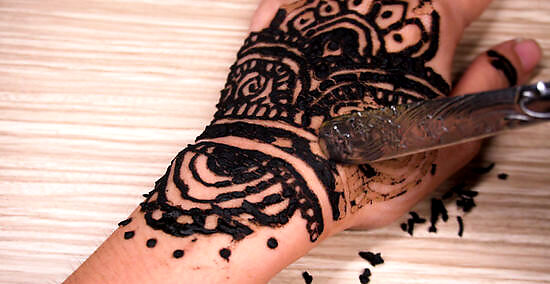
Remove the henna by picking it off or rinsing it. The raised henna is not actually part of the design. In order to reveal the beautiful stain, you need to remove the paste first. There are 2 ways that you can go about this: Pick the dry henna off over a trash can. Use gloved fingers or a spoon to do this. Do not use your bare hands, or you risk staining them too. Rinse the henna off with water, then pat your skin dry with a towel. Do not rub the henna while rinsing it.
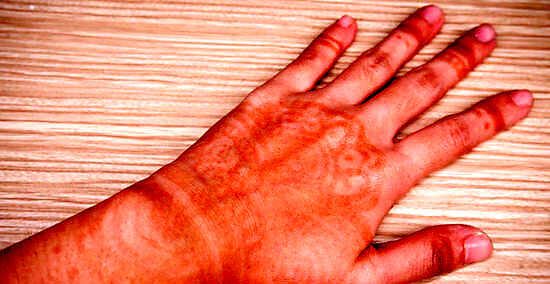
Keep your skin moisturized and don't exfoliate to preserve your design. Eventually, the stain will wear off. This can take anywhere from 10 days to 2 weeks. To help the stain last longer, however, wear hand lotion or oil over it. Do not exfoliate your skin with body scrubs or loofahs. Just about any food-grade oil is fine for henna. Olive oil and jojoba oil are great options. Chlorine may cause henna tattoos to fade, so be sure to apply some petroleum jelly or chapstick to keep it from drying.




















Comments
0 comment